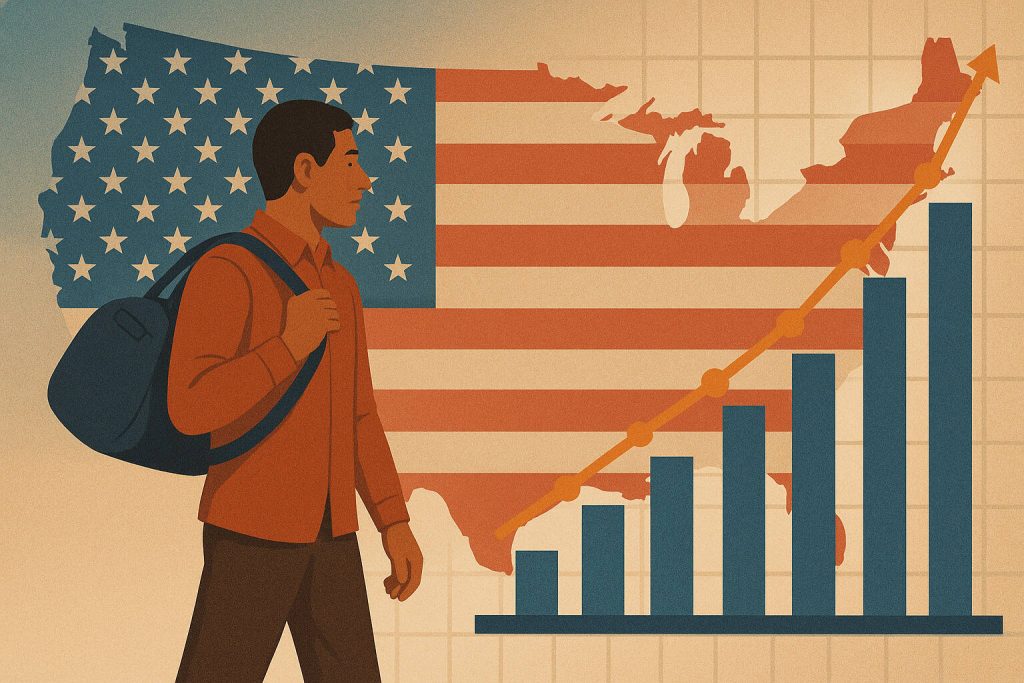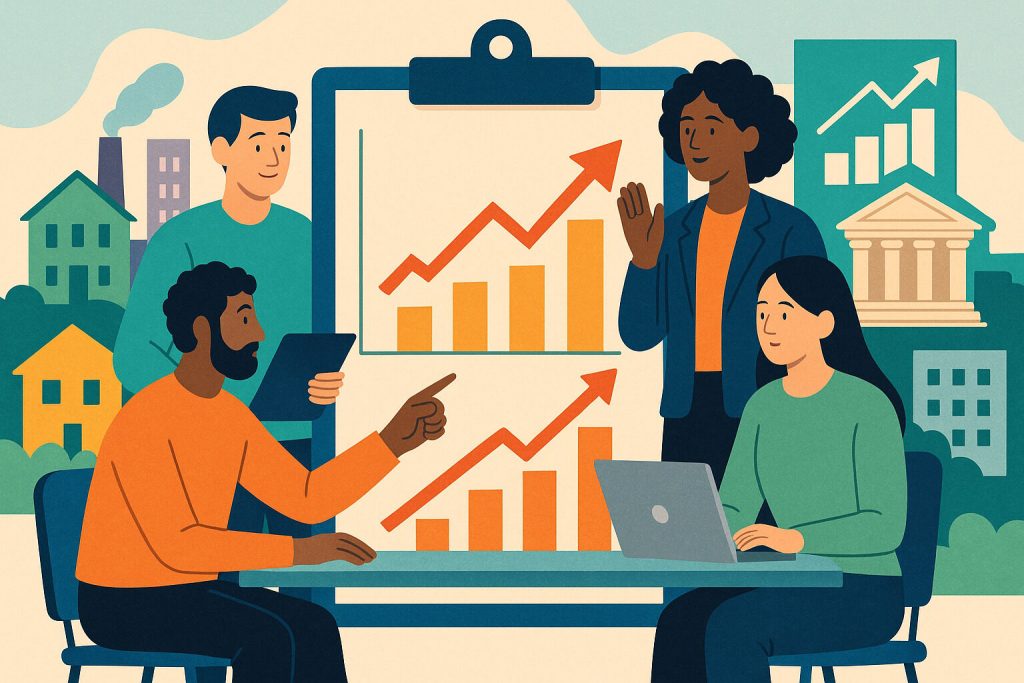
Why Immigration Is Crucial to the Growth of the American Economy
The United States has long been recognized as a nation built by migrants. Throughout every chapter of its history, new groups of people have arrived from different parts of the world in search of a better life. Today, immigration’s impact is not only seen in culture but especially in the economy. Many businesses, industries, and services rely on immigrant workers.
This topic matters because while it’s frequently discussed in politics and the media, it’s not always clear how it truly affects the livelihoods of Americans. Understanding immigration’s role in the economy can guide better decision-making—from legislation to everyday social attitudes.
When we look closer, we see that immigrants contribute significantly to labor, production, and business growth. They’re not just workers—they’re also families that drive economic demand. Immigration’s impact is far broader than many assume.
Immigrants in the Labor Sector
In many US industries, a large percentage of the workforce comes from abroad. These include agriculture, construction, elder care, and food service. These jobs are often difficult, low-paying, or involve unpleasant conditions that many local workers avoid.
As a result, many employers rely on immigrants to keep their businesses running. On farms, for instance, much of the harvest depends on seasonal immigrant labor. In cities, restaurants and hotels often can’t operate efficiently without foreign-born staff.
This workforce structure directly affects the price of goods and services. When there are enough workers, prices stay affordable. Immigrant presence in the labor force is thus vital not only to employers but to society as a whole.
Contributions to Taxes and Public Services
Some believe immigrants are a financial burden on the government. But numerous studies show the opposite. Most immigrants pay taxes—federal, state, and local—even those without legal status. In fact, many contribute to the system without receiving benefits.
Beyond income tax, they also pay sales and property taxes (directly or through rent). These funds support education, healthcare, and other public services that everyone uses. In some states, immigrant contributions make up a large portion of total government revenue.
It’s also untrue that they’re the main cause of public service strain. In many places, they’re the ones working in those very services—nurses, caregivers, cleaners, and more. Contributions should be viewed holistically, not from a single angle.
Expanding Demand and Consumption
Every immigrant living in the US is part of the active economy. As consumers, they buy food, clothing, household goods, and pay rent or purchase homes. Their spending increases overall economic demand, which fuels business and production.
In communities with vibrant immigrant populations, local businesses tend to thrive—from groceries and restaurants to daycare centers. More people means more needs, which creates more opportunities for local economic growth. Immigrant arrivals often revitalize local communities.
Some businesses are also directly created by immigrants. From small corner stores to large companies, there are many success stories that started with a foreigner who dreamed of a better life in America. Their role as consumers and entrepreneurs helps expand the market overall.
Driving Innovation and Technology
Immigration’s effect isn’t limited to manual labor. In fields like science, technology, and innovation, many immigrants are among the top experts. In Silicon Valley, for example, a significant portion of companies were founded or led by people of foreign origin.
Many technologies used today were imagined by immigrants. They’re not just employees—they’re innovators, researchers, and entrepreneurs. Their expertise leads to the creation of new products, systems, and technologies that stimulate the economy.
This type of contribution has long-term benefits. As their ideas generate jobs, businesses, and global competitiveness, the entire country gains. Immigration’s impact isn’t just in numbers but also in the quality of knowledge and experience they bring.
Filling Gaps in Specialized Jobs
Some US industries face ongoing shortages of skilled workers, such as doctors, engineers, IT professionals, and scientists. skilled migrants help fill these gaps.
Programs like the H-1B visa allow qualified foreign professionals to work in the US. While there’s debate about their effect on local workers, many employers say it’s the only way to keep operations alive.
Having global experts boosts the quality of American services and products. In hospitals, universities, and tech companies, these professionals are part of teams delivering world-class results.
Opportunity and Risk for Local Workers
At times, tension arises between local workers and immigrants. In certain industries, there’s fear of wage suppression or job loss due to competition. But most studies show these effects are limited to specific cases and not widespread.
Broadly, immigrants tend to take jobs that locals no longer seek. They also complement other roles—helping complete the production chain. For example, an immigrant might handle entry-level tasks in a plant while locals manage operations.
Still, it’s important to provide ongoing education and training for local workers to keep pace with industry changes. This helps maintain balance between opportunity and economic needs.
Growing Small and Medium Businesses
Immigrants play a key role in the growth of small and medium-sized enterprises. Many have entrepreneurial spirit—they’re hardworking, driven, and willing to start businesses from scratch. This creates opportunities not just for themselves but for others too.
Markets and restaurants often showcase immigrant-owned businesses. These ventures generate jobs for both locals and fellow immigrants and bring life to previously stagnant communities. In some cities, the revival of the local economy was sparked by such businesses.
Their enterprises also tend to meet the unique needs of their communities. Diversity of background thus leads to a broader range of services and products for everyone.
Impact on Demographics and Population
The US has an aging population. Each year, the number of elderly people grows while the birth rate declines. This directly impacts the workforce and systems like Social Security, which depend on contributions from current workers.
Here, immigration plays a crucial role. Newcomers are typically younger, of working age, and ready to build families. They help sustain a population capable of working and paying taxes.
In many communities, schools, businesses, and public services remain open and active thanks to new residents from abroad. This dynamism is vital to maintaining social and economic vitality.
A Broad Impact on the Nation
When discussing the US economy, immigration’s role cannot be excluded. From farms to laboratories, from markets to university research labs, immigrants are essential to the nation’s success. Their contributions aren’t temporary—they’re long-term.
Despite challenges, data consistently show the positive effects of immigration—from paying taxes and boosting business to filling job gaps. It’s clear they’re a core part of modern America’s achievements.
Therefore, deeper understanding and sound policies on immigration are not just legal matters—they’re matters of national future.


